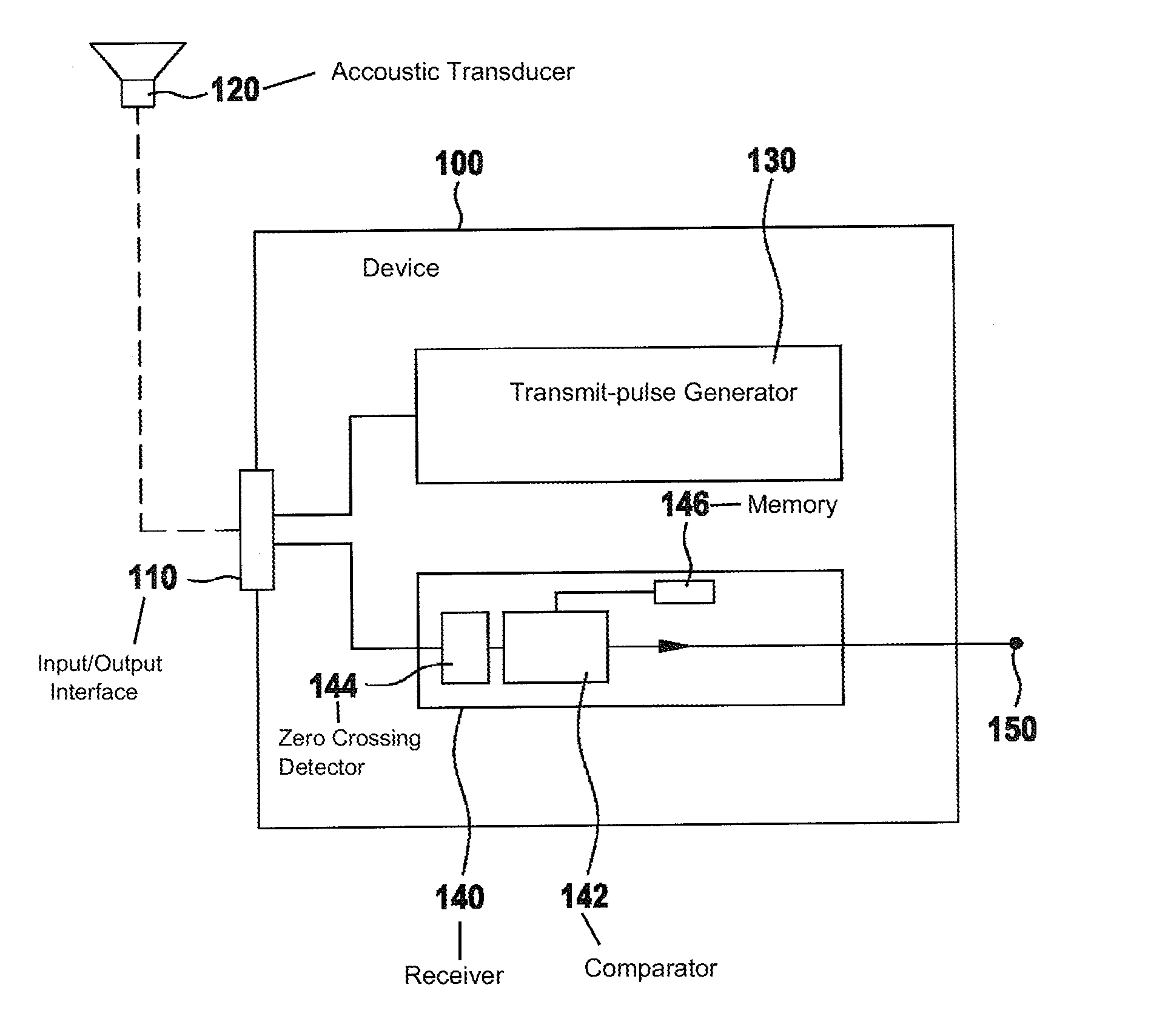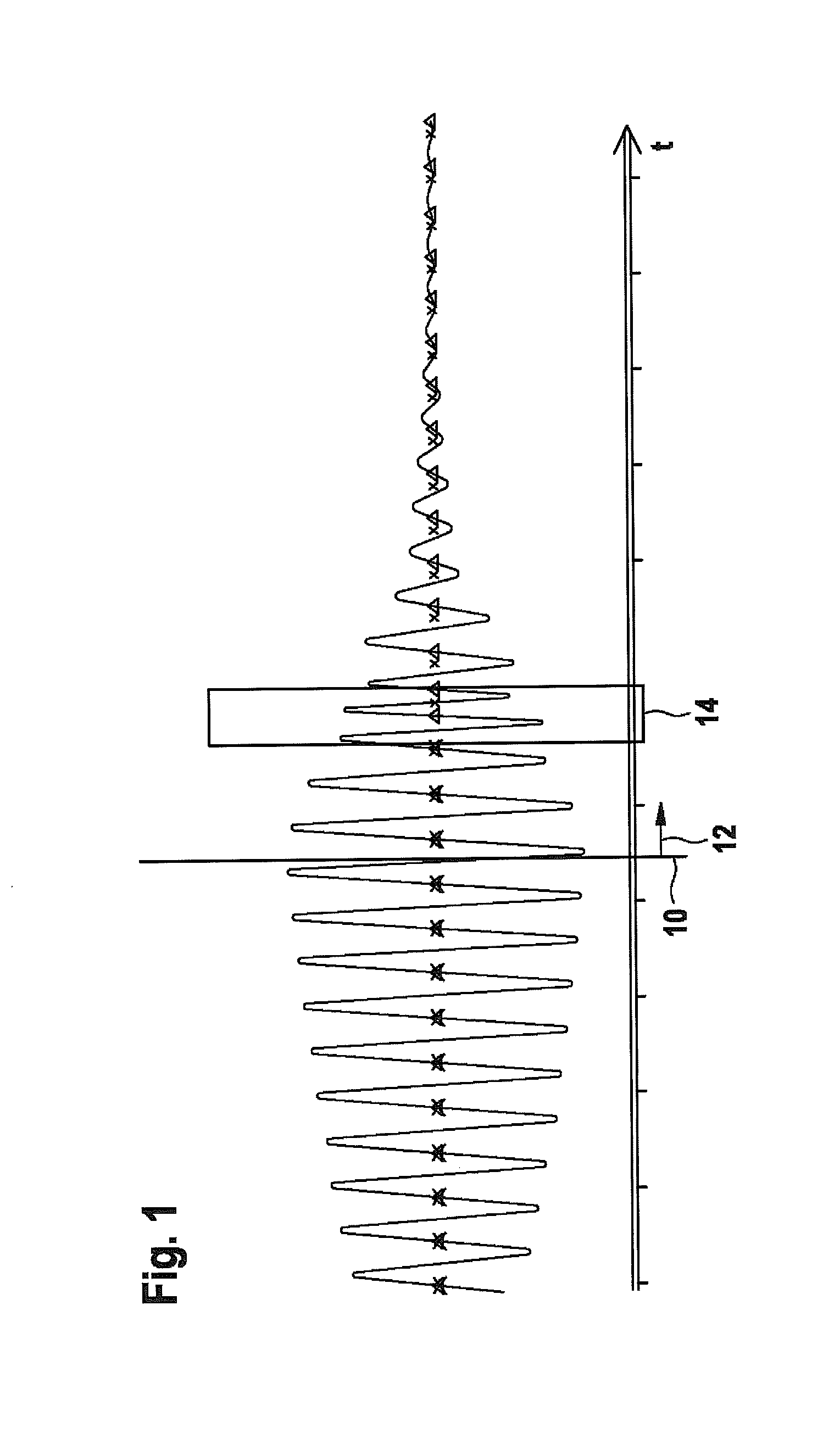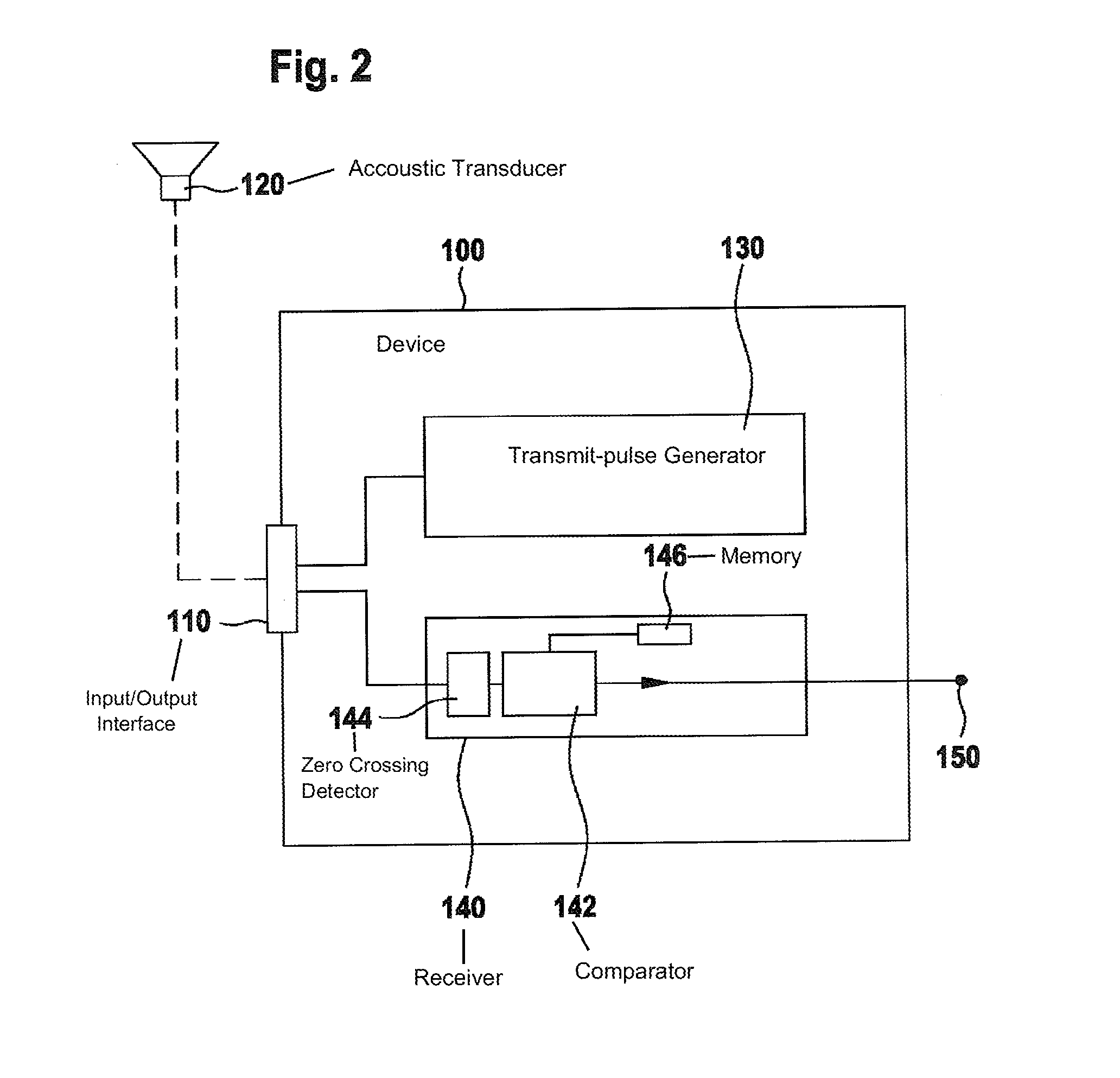Method and device for acoustically sensing an area
a technology of acoustically sensing and an area, applied in the direction of measurement devices, instruments, using reradiation, etc., can solve the problems of reducing the overall sensitivity of the transducer, limiting the minimum measuring distance downwards, and limiting the use of measures to a limited extent, so as to reduce increase the danger of collision, and reduce the safety distance
- Summary
- Abstract
- Description
- Claims
- Application Information
AI Technical Summary
Benefits of technology
Problems solved by technology
Method used
Image
Examples
Embodiment Construction
[0036]FIG. 1 shows an actual signal characteristic of a transducer, which is used according to the invention. The transducer is excited up to an instant 10, so that an increasing amplitude of oscillation results up to instant 10. Post-pulse oscillation time 12 begins as of instant 10, instant 10 representing the end of the excitation of the transducer. It is apparent that in post-pulse oscillation time 12, the signal strength decreases continuously according to the post-pulse oscillation behavior of the transducer. During time span 14, a reflected transmit pulse strikes the transducer, so that the reflected transmit pulse influences the post-pulse oscillation behavior. After time span 14 within post-pulse oscillation time 12, the reflected transmit pulse has ended, and the post-pulse oscillation behavior is no longer influenced. An actual phase response results from zero crossings of the actual signal characteristic in the positive direction, the corresponding occurrence instants be...
PUM
 Login to View More
Login to View More Abstract
Description
Claims
Application Information
 Login to View More
Login to View More - R&D
- Intellectual Property
- Life Sciences
- Materials
- Tech Scout
- Unparalleled Data Quality
- Higher Quality Content
- 60% Fewer Hallucinations
Browse by: Latest US Patents, China's latest patents, Technical Efficacy Thesaurus, Application Domain, Technology Topic, Popular Technical Reports.
© 2025 PatSnap. All rights reserved.Legal|Privacy policy|Modern Slavery Act Transparency Statement|Sitemap|About US| Contact US: help@patsnap.com



